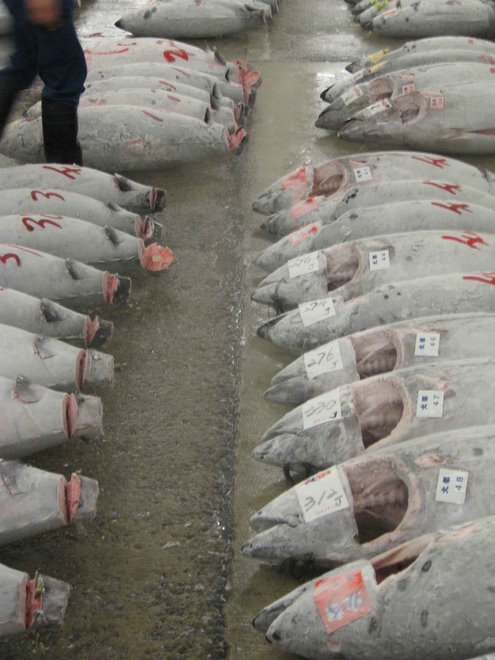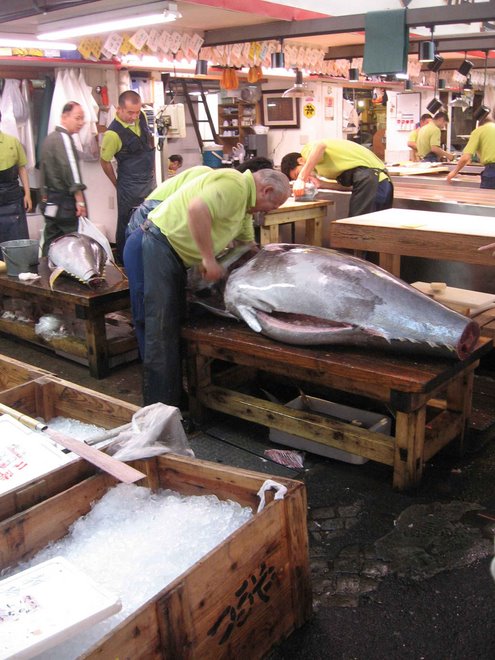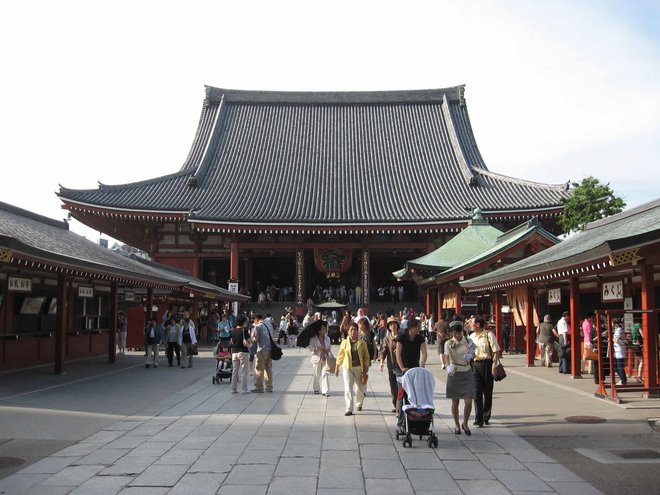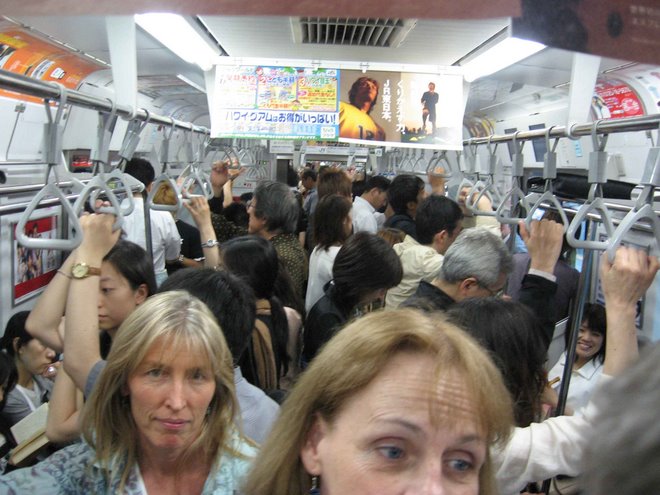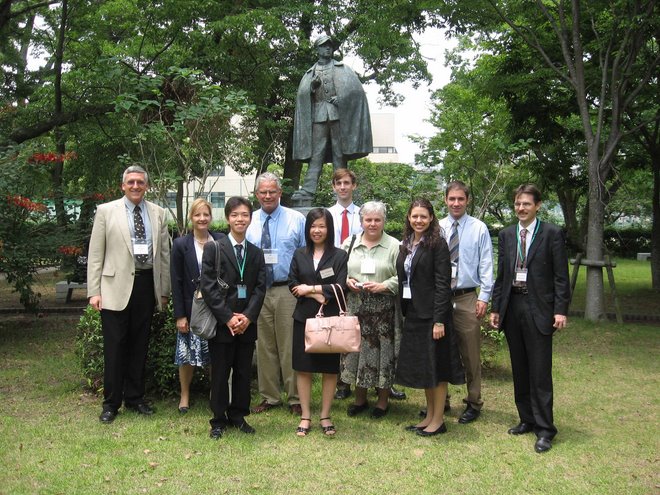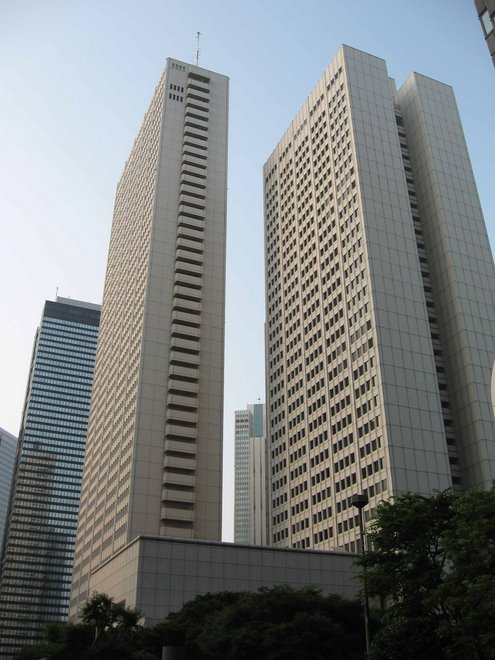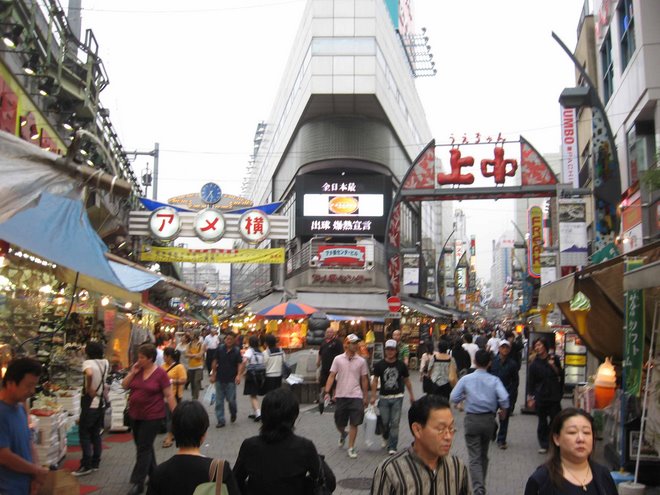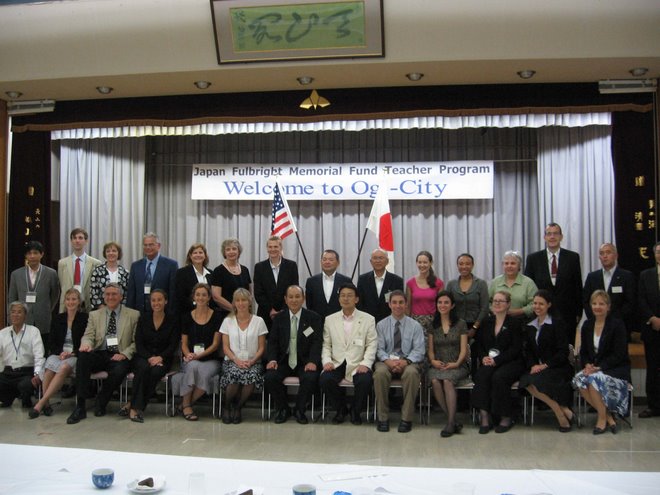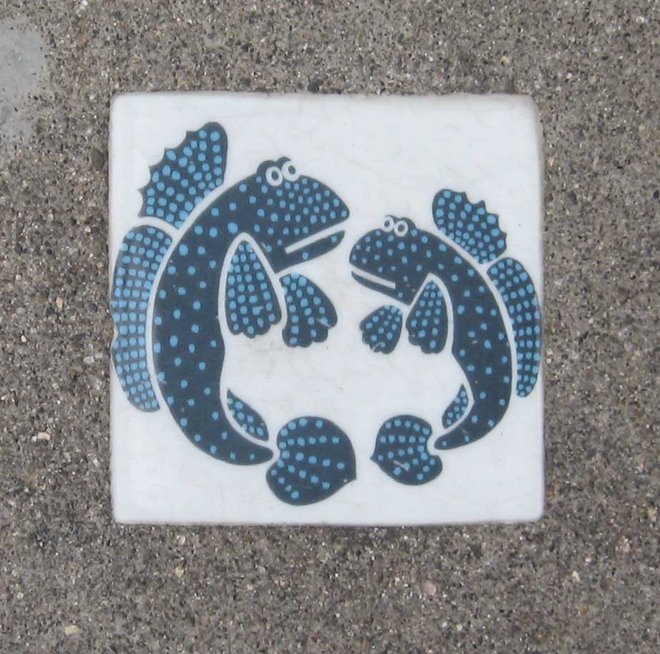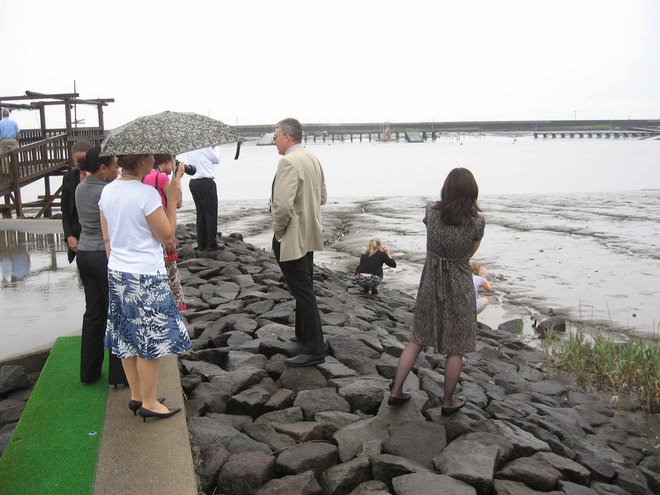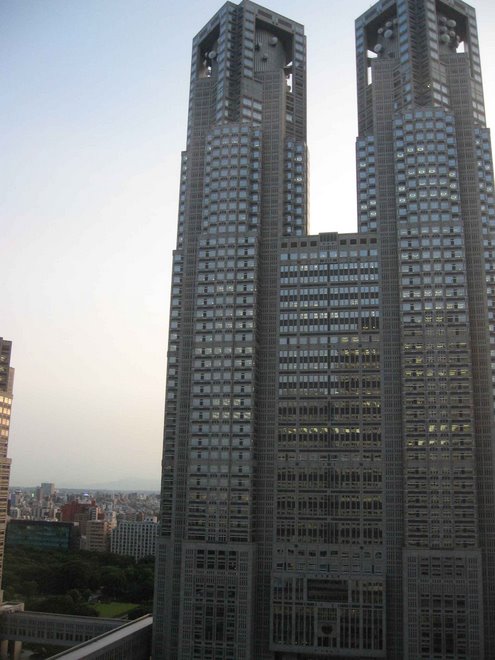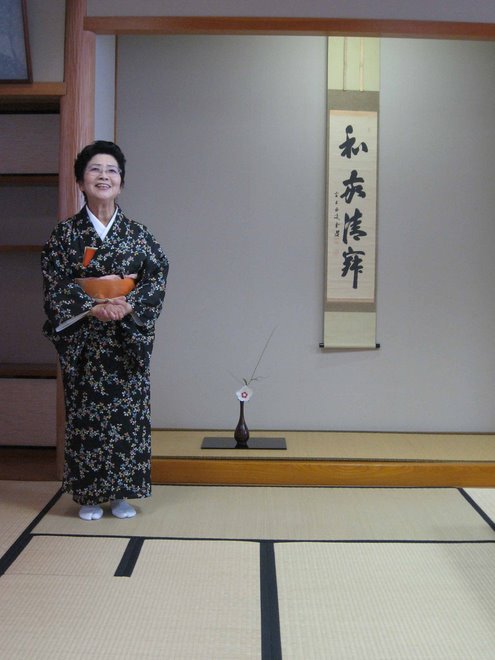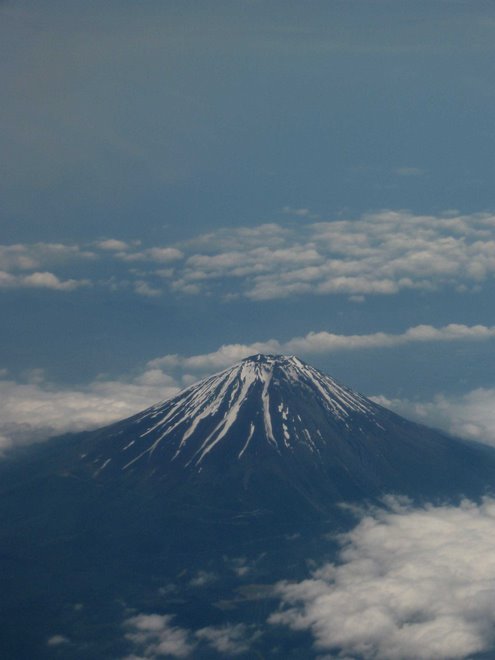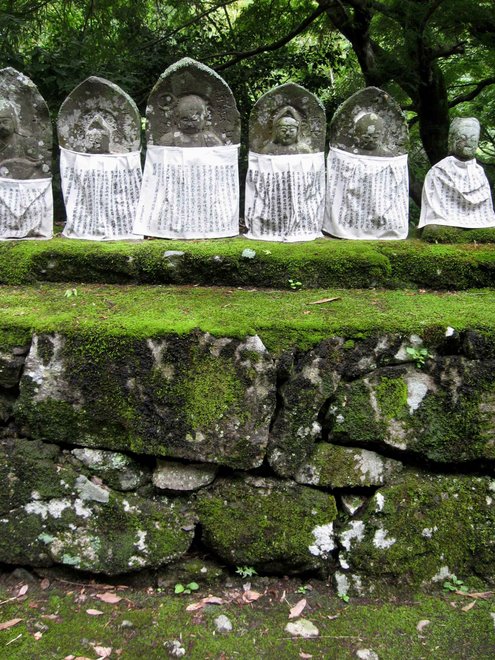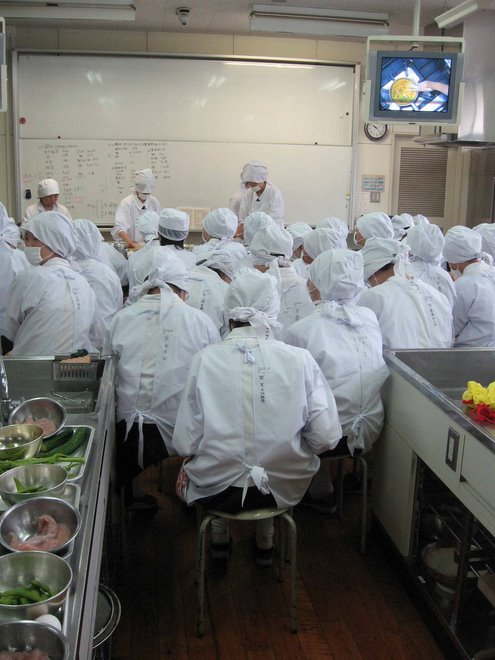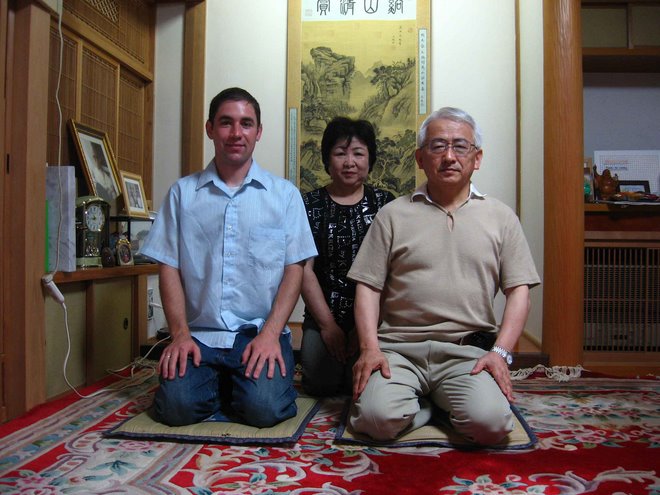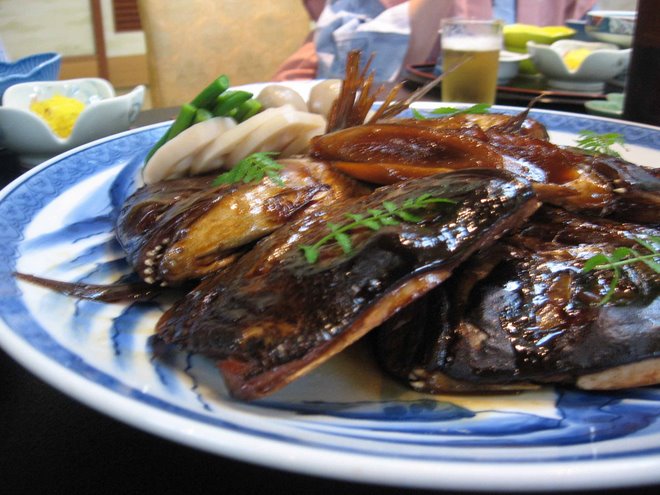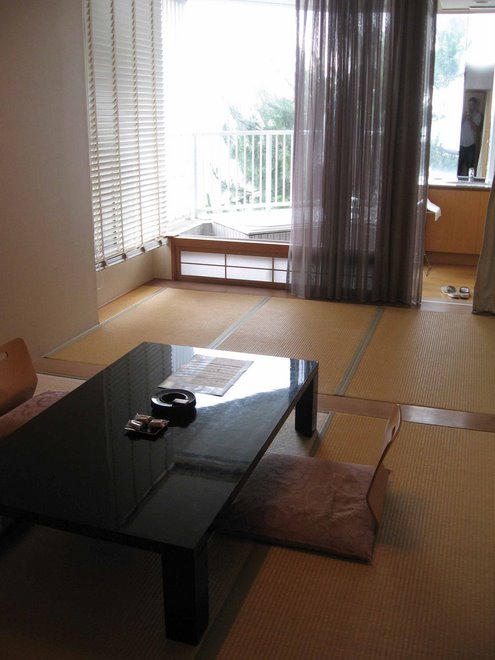This summer I participated in the Japan Fulbright Memorial Fund program. The program is sponsored by the Japanese government and takes 200 teachers from the
Day 1:
Getting off the plane in
This summer I participated in the Japan Fulbright Memorial Fund program. The program is sponsored by the Japanese government and takes 200 teachers from the
Day 1:
Getting off the plane in
Day 2: Arrival in
The flight to
After arriving at our hotel, I, along with three others went to dinner with a local Japanese student. He showed us how to eat noodles (slurping is encouraged) and explained different items on the menu. In
Day 3:
Our day started with an orientation on the city of
After our orientation we had the pleasure of hearing Dr. Tsutomu Kimura, President of the National Institute for Academic Degrees and University Evaluation, give a speech on Educational reform in
After Dr. Kimura’s speech, we hit the buses for a trip to the national Diet, which is the equivalent to our
After the visit to the Diet, we stopped by the Asakusa Shrine. The shrine is Shinto and dates back to the year 628. There are a lot of cool buildings and plenty of people there to worship or just to see an important part of Japanese religious history.
The day ended with a fancy opening reception/banquet. I found out that instead of saying “Cheers!” when making a toast, the Japanese say “Kompai!” I also found out that raw fish really doesn’t taste that bad.
Day 4: Japanese Economy and Government
Yuji Tsushima, a member of the Japanese House of Representatives, and Wakako Hironaka, a member of the House of Councillors spoke to us about the Japanese government. The two are members of opposing parties, much like the Republicans and the Democrats, but the were very gracious and civil when speaking to us about issues that
For dinner I ate some delicious noodles called udon. They are similar to what you might find in homemade chicken-noodle soup – thick and chewy. Udon noodles are served in broth and may have a little bit of meat or vegetables. They are served hot or cold. (typically hot in the winter and cold in the summer).
After dinner I went to the top of the North tower of the
Day 5:
Today I rose early (4:30 AM) with three other and went to the Tokyo Fish Market, also known as the Tsukiji market in
Check out the market at:
http://www.nationalgeographic.com/photography/galleries/tokyo/
http://www.tsukiji-market.or.jp/tukiji_e.htm
http://youtube.com/watch?v=3iAU9vIaAV4
Upon return from the fish market I had a traditional Japanese breakfast. It consisted of rice, cooked salmon, vegetables with lotus root, and miso soup (made from soy bean paste, seaweed, and tofu).
After breakfast I attended a seminar entitled “Peace Education.” There were three presenters who spoke and then took questions. Tomoke Yanage, a second generation atomic bomb survivor whose dad was one mile from ground zero, spoke first. Half of the people at one mile from ground zero died instantly. Many of the other half had health problems for the remainder of their lives and were shunned because they were “contaminated.” Koji Ikeda, a 90-year-old man that survived the
Today there are many opinions about whether or not the atomic bombs should have been dropped. After listening to these people speak and talking to other Japanese, I have come to an understanding that this debate is no longer important. Preventing it from happening again is.
Dinner was tempura, which is battered and deep-fried vegetables and meat.
After dinner a group of us hopped on a train and headed out to a Japanese Major League baseball game. We were going to see the Hanshin Tigers vs. the Seibu Lions at the Lions’ home field. Japanese baseball is the same as our baseball as far as the game goes, but very different as far as the crowd goes. We could hear the “thump, thump, thump” of the drums inside the stadium when we got off the train. At the entrance, Tigers fans went to the right, and Lions fans to the left. The stadium was equally divided between the two. The fans were very polite to each other. When one team was at bat, its fans would cheer and the opposing team’s fans would be quiet. There were individual cheers for each team and even each player. The outfield section was full of the most devoted fans. In this section the drum players would lead the entire stadium in cheering their team on. The possibility of hearing the crack of the bat was non-existent. It was constant noise. The Lions pulled out a close one, hitting in the winning run in the bottom of the ninth.
Day 6: Free Day!
Today was the one day we could do whatever we wanted. I chose to go down to
Day 7: Off to Ogi, Saga
We broke off into our smaller groups of 20, said goodbye to the others, and headed in different directions. Some groups hopped on buses, some on bullet trains, and some, like my group, on airplanes. By the end of the day, teachers from the United States were in 10 different cities, including Aomari, Okara, Tome, and Matsumoto, which is Salt Lake City’s sister city. We were the furthest south out of all of the groups when we arrived in the Saga prefecture. The plane ride took us right by
Our hotel is in Saga, the capitol of Saga Prefecture. Saga is on an open plain between the mountains and ocean. It has a history of 3,000 years. Saga played an important role in opening
Day 8:
This morning we met with staff and students at Saga University. After the war, the Japanese government decided to open at least one university in every prefecture in the country.
After our visit to the university, we headed to Ogi to meet mayor Shuji Eriguchi and the city council. Mayor Eriguchi is currently running for the House of Representatives and pictures of him can be found on streets throughout the prefecture. He told us briefly about Ogi. The town has 47,000 people and its major industry is agriculture and the cultivation of seaweed. His administrative theme for Ogi is slowing down and enjoying life, with an emphasis on sport and leisure. Because of this emphasis, there is a low degree of stress in Ogi. At the reception with the mayor we had our first taste of Yokan, a sweet that is produced here. It is made from sweet bean past and seaweed gelatin. On our way back to Saga, we stopped by the bay and witnessed the habitat of the mudskipper. Mudskippers are amphibious little creatures that hop around the mud in effort to find a mate. Pictures of the things are all over Ogi and Saga. They are even on man-hole covers and tiles in the sidewalk.
Day 9: School Board
We met with the Ogi school board this morning. The 5 main objectives of the board are as follows: Promotion of school learning, provision of solid family support and pre-school education, promotion of enriching lifelong learning and sports, passing on of traditional Japanese culture and promotion of local heritage, maintenance and improvement of educational environments.
The meeting was very informative and I will just write a few things that I found interesting. Classes here are large, with the cap being at 40. Students are required to participate in after school club activities. There are a huge number of clubs to choose from, including table-tennis, baseball, orchestra, art, and martial arts. Because of club activities students don’t leave school until 5:00. Teachers are usually there until 7:00.
In Ogi, 21% of the local budget is allocated for education. The meeting made us all eager for the coming school observations we will participate in.
Before heading back to Saga we were treated to a Japanese lunch of lots of seafood, both raw and cooked. We then stopped at the local sake (sah – kay) brewery. Sake is wine made from fermented rice. We also saw the Yokan museum (that’s the sweet bean and seaweed gelatin candy). There was plenty to sample, some of which was not very good, and some of which wasn’t too bad.
Back in Saga, two other people in my group and I met up with Aya. We met Aya at
Day 10: Ogi Junior High
At Ogi Junior high we got our first experience inside a Japanese school. The school has 639 students. I, along with the three other art teachers in my group, was drawn immediately to the art room, where students were busy working on geometric line drawings. I was impressed at the behavior of the students, and surprised when they rose to bow at the teacher at both the beginning and end of class. The teacher did not speak English, so we went and found our group interpreter. I asked about the obvious emphasis on Western art, and why Eastern and traditional Japanese art was not being taught. He explained that Western art is based on elements and principals that are essential to learning basic skills. Eastern art, however, is based on religion and philosophy. He told us that students that are serious about art will study Eastern art in more advanced classes.
After a while in the art class, I stopped by a Japanese class. Students were discussing stereotypes. Some interesting stereotypes of Americans: golden hair, big noses, wide open eyes, and high calorie food. Before I entered the class they had asked some others from my group about some stereotypes of Japanese people. One of their replies was “always taking pictures.” This made the kids laugh, as all twenty of us Americans were toting cameras and taking pictures of just about everything.
Lunch was served in the classroom. I was assigned a class and given a special helper to walk me through the process. There are no lunch ladies in
Day 11: Mikatsuki Elementary
We arrived at the elementary a little bit early so we could be there as students arrived. I sat on the steps in front of the school and soon was surrounded by little kids who challenged my abilities at rock-paper-scissors. When school started we were met with a warm welcome of 1,000 cheering kids, all sitting neatly on their bumbs in the gymnasium. It was the closest I will ever come to feeling like a star. After our introduction a little sixth grade girl stood and welcomed us in English. She had prepared a speech and read it perfectly. I felt my eyes getting damp. The kids sang us their school song and we left to more cheering. I was assigned a class and did my best to introduce myself using the chalk board. I stayed in the class most of the day. Lunch was just like the junior high, very disciplined and efficient. We left the room once to go to the music room, where students sand and played the recorder for the music teacher. During math another teacher who must specialize in the subject came in and “team” taught. I stepped out for a minute to observe a class that was doing an art project. They kids were learning wood-block printing and were in the first stages of drawing their eventual print. Something that most of us noticed and asked about when we met with teachers after school was the lack of computers in the classroom. It was the same at the junior high. Each school had a computer lab, but none of them were being used. This seemed odd in such a technologically advanced country. The teachers explained that this is a problem that the government is looking into. They said that kids learn to use computers at home. Eventually, when they graduate college, companies will train them according to what they need to know specifically for their work.
This evening I went to dinner with a few others in the group. We found a place where the waitress, cook, and greeter were the same person. She was an old heavy set woman with a raspy voice and warm smile. She and her husband run the place. It was a place where the locals eat. We ended up pointing to someone else’s food in order to tell her what we wanted to eat. I had some stir-fried veggies with rice and miso soup. It was delicious.
Day 12:
After a lunch that consisted of several local delicacies that included whale skin and some sort of weird looking sea creature, we were treated to a Japanese tea ceremony. The room where the ceremony was held had been furnished with tatami mat floors and traditional paper walls. The room is used specifically for teaching students the way of the tea ceremony and we were rare guests. The teacher was dressed in a beautiful kimono. As the ceremony proceeded, she taught the basics of manners and tradition. On display was a scroll with calligraphy and ikebana which is a flower arrangement that represents earth, life, and the heavens. The scroll had four Chinese characters which meant harmony, respect, purity, and tranquility. The purpose of the tea ceremony is to provide all participants a guide toward the realization of genuine peace.
Days 13/14: The Homestay
In order to provide each of us with a genuine Japanese experience, we were all given the opportunity to spend two days and a night with a Japanese family. My family was a middle-aged couple whose children were grown and out of the house. My host mother, Mariko-san (san is a word added to names as a sign of respect) is a piano teacher and my host Father, Koizi-san, an office worker. The morning we all met I was a little bit nervous, and I’m sure they were too. That all disappeared moments after we greeted each other. Koizisan and Marikosan were very kind and made me feel right at home. Koizisan spoke enough English to allow for some good communication. I soon learned about their children, jobs, and hobbies. They reminded me of my own parents. As soon as we arrived at their house, I was treated to lunch of cold udon noodles, which were dipped in a glass of iced soy sauce. I had a little bit of trouble using chopsticks with the slippery noodles, so Marikosan got me a fork. In Japanese households people leave their shoes at the door and step into slippers. When lunch was over, we drove in to Saga and went to the painting museum, history museum, and castle museum. We then went to Kiyomizu waterfall. It required a small hike and I was amazed by the lush forest and countless Buddhist and Shinto statues and shrines. For dinner Marikosan made sukiyaki, which was absolutely delicious. In a frying pan she cooked onions, cabbage, and thin sliced beef in soy-sauce and sugar. I was shown how to break a raw egg into a bowl and whisk it with my chopsticks. When the meat and vegetables were cooked, they were dished into the bowl with the egg. The hot temperature of the meat cooked the egg that coated it. I ate and ate and ate until I couldn’t eat any more. It was yummy! After dinner I was shown where I would be sleeping. A futon had been pulled out of the closet and onto the tatami mat floor. I slept great and anticipated the trip we would take the next day to Arita. Breakfast in the morning was an omelet that I thoroughly enjoyed. When I finished, Kiozisan got a twinkle in his eye and asked me if I had ever tried natto. I told him no. He then asked if I had tried noni or sour plums. I again said no. Soon Marikosan appeared with all three. Koizisan informed me that these were the three things he heard Americans didn’t like to eat for breakfast. Then he asked if I wanted to try. I said sure, and dipped my chopsticks into the natto, which are fermented soy beans that have excreted a sticky syrup. Koizisan watched in delight as I placed them in my mouth and swallowed hard. Then came the nori, small strips of seaweed paper that are dipped in soy sauce and eaten with rice. The nori was actually quite good and I even had seconds. I can’t say that about the sour plums. One of those put a look on my face that had Koizisan and Marikosan laughing out loud.
Arita is a small town where world famous porcelain is made. Our destination was the ceramics museum, which has an amazing display of historical and contemporary pottery. We spent a good amount of time at the museum and then headed into town to see some galleries.
At 3:00 PM we met back up with the others from my group and their host families for the goodbye reception. It was the end of a brief but incredible experience I will never forget. As our bus pulled away all of the host families waved goodbye with both hands until we could see them no more.
From the reception we headed straight to Karatsu for a stay in a ryokan, a traditional Japanese inn. Every ryokan has rooms with tatami mat floors, an onsen, and yukatas for all its guests. Our ryokan was on the beach with a view of the Sea of Japan and Karatsu castle, one of only four original castles in
Day 15: Back to
After a relaxed morning at the beach, we all headed back to the airport for a return flight to
Day 16: Closing Reception
This morning I attended a seminar about art education in
In the afternoon we had one last question and answer period about the education system of
Day 17: Wrapping It Up
Today each group did a presentation on their experiences in their host cities. The presentations were very impressive and it was evident that everyone had their own special experience. For our presentation we performed a comical kyogan play about mudskippers. We then showed slides of the incredible people and scenery of Ogi and Saga. To end it, one woman in the group shared an experience she had with her host family. Soon after she met her host father they discovered that his father had been a soldier in the Japanese army during the war and this woman’s father had been an American soldier. The host father quickly said “We must go to
The night ended with a closing reception. There were many hugs and even some tears as we all said our goodbyes, promising to make our new friendships last.
In Reflection:
It is hard to put into words the experience I had in
A special thanks to all of those who made this trip possible, and to Laurasan, our guide, guardian, interpreter, and friend.




